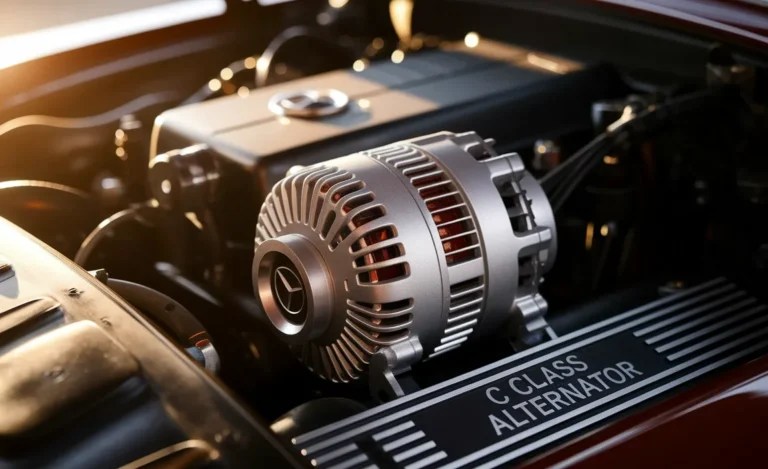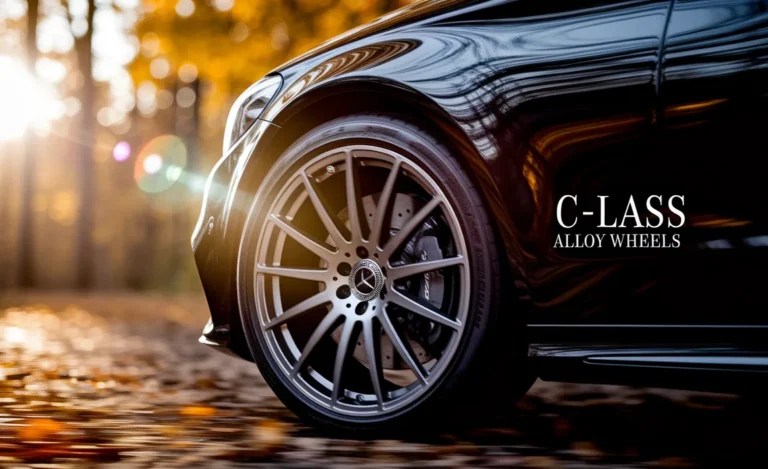Mercedes-Benz C Class Crash Avoidance: The Ultimate Defense
C Class crash avoidance is about leveraging advanced safety technologies and smart driving habits to significantly reduce the risk of collisions in your Mercedes-Benz C-Class. It involves understanding your car’s features and employing proactive defensive driving techniques.
Driving a Mercedes-Benz C-Class is a rewarding experience, blending sophisticated comfort with dynamic performance. However, like any vehicle, the unexpected can happen. Understanding how to prevent accidents is crucial for every C-Class driver.
This guide unlocks the secrets to “C Class crash avoidance,” transforming your understanding of your car’s capabilities and your role as a safe driver. From cutting-edge driver assistance systems to the fundamentals of defensive driving, we’ll cover everything you need to know to stay safe on the road. Get ready to enhance your confidence and mastery behind the wheel.
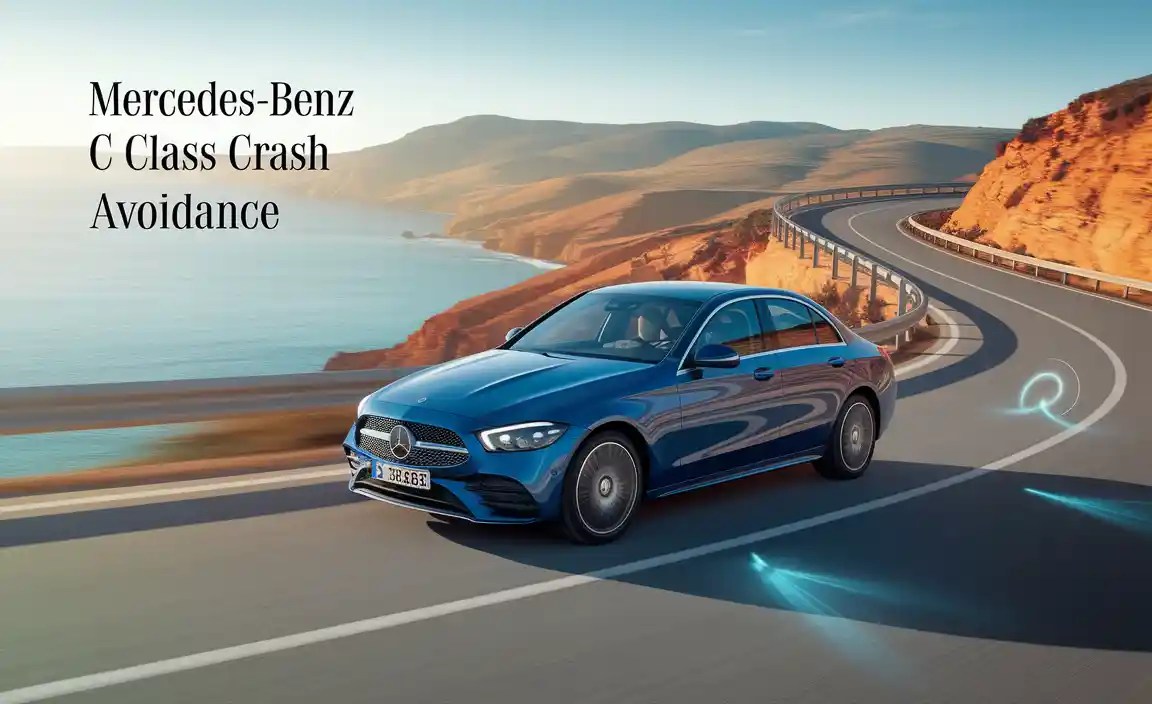
Understanding C Class Crash Avoidance Systems
Mercedes-Benz is renowned for its commitment to safety, and the C-Class is a prime example of this dedication. Modern C-Class models are equipped with a suite of intelligent systems designed to anticipate and help avoid potential collisions. These systems work in harmony, constantly monitoring your surroundings to provide an extra layer of safety.
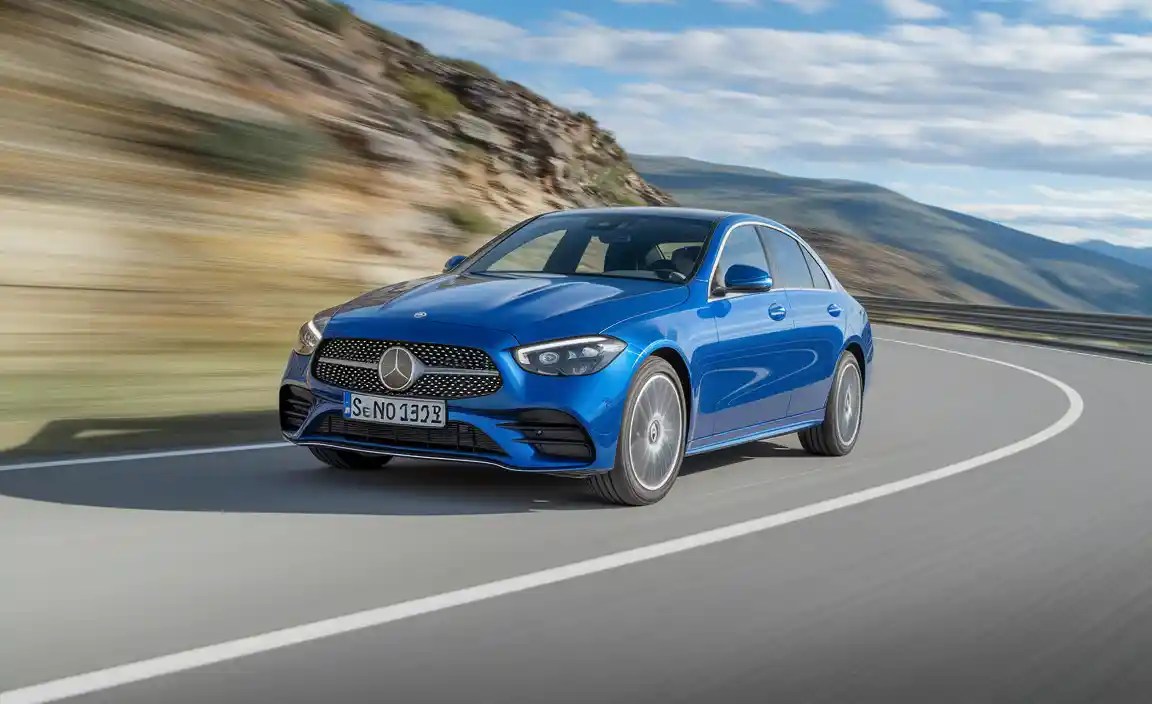
Active Brake Assist
One of the most significant advancements is Active Brake Assist. This system uses radar and camera sensors to detect vehicles ahead, as well as hazards like pedestrians or cyclists. If it senses an imminent collision and you haven’t reacted, it will issue a warning and then automatically apply partial or full braking to help mitigate or even prevent an impact.
ATTENTION ASSIST®
Driver fatigue is a major contributor to accidents. ATTENTION ASSIST® monitors your steering behavior and other parameters for signs of drowsiness. If it detects patterns indicative of fatigue, it will provide a visual and audible warning, suggesting you take a break. It’s like having a co-pilot who understands when you might need to rest.
Active Lane Keeping Assist
Drifting out of your lane unintentionally can be dangerous, especially on highways. Active Lane Keeping Assist uses a camera to monitor lane markings. If the system detects unintentional drifting, it can steer the vehicle back into its lane with corrective braking pulses. This is particularly helpful on long journeys or in adverse weather conditions.
Blind Spot Assist
This system helps you avoid accidents during lane changes. Blind Spot Assist uses radar sensors to monitor the areas to the rear and sides of your vehicle that your mirrors might miss. If it detects a vehicle in your blind spot, a warning light appears in the corresponding exterior mirror. If you indicate to change lanes, an audible warning will also sound.
Adaptive Cruise Control (DISTRONIC PLUS®)
While not strictly a crash avoidance system in itself, DISTRONIC PLUS® with Steering Assist significantly contributes to safer driving. It not only maintains set speed but also keeps a safe distance from the vehicle ahead. The steering assist function can help keep the car centered in its lane, reducing driver workload and the likelihood of minor errors that could lead to accidents.
The Pillars of Defensive Driving for Your C-Class
While your C-Class is packed with technology, safe driving ultimately depends on the driver. Embracing defensive driving techniques is your first and most crucial line of defense against collisions. This approach focuses on anticipating hazards and making conscious decisions to avoid them, rather than just reacting to them.
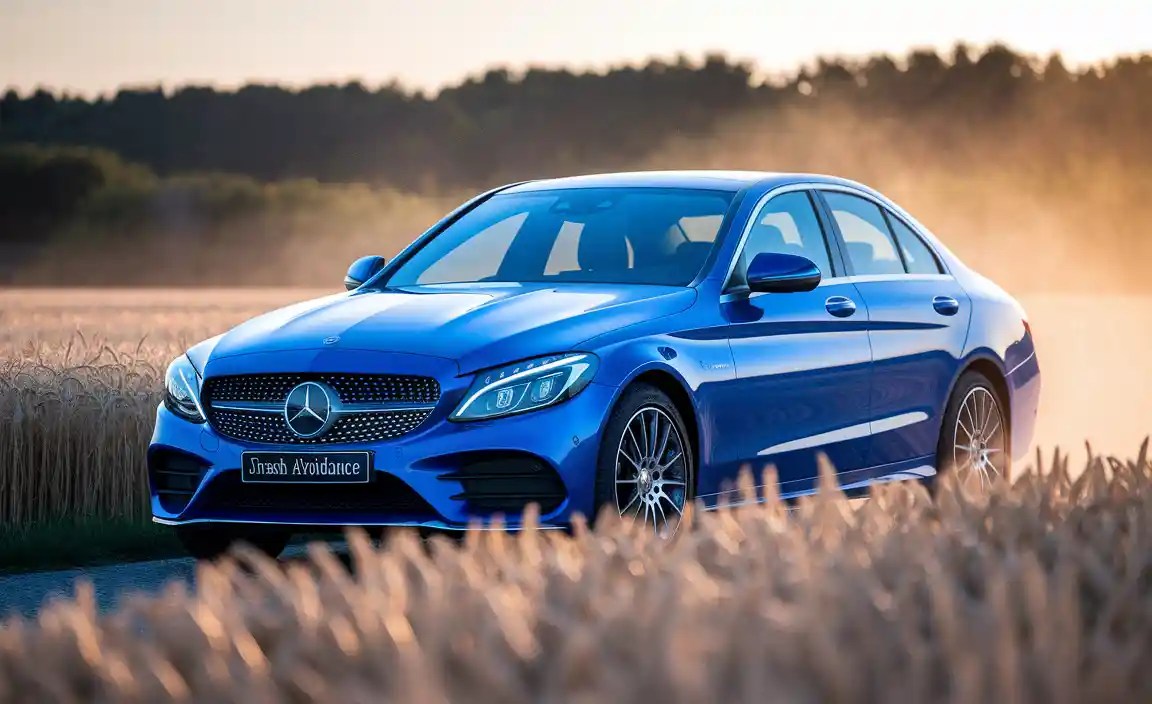
Maintain a Safe Following Distance
The “three-second rule” is a good starting point. Pick a fixed object on the road ahead (like a sign or bridge). When the vehicle in front of you passes it, count “one-thousand-one, one-thousand-two, one-thousand-three.” If you reach the object before you finish counting, you’re too close. This buffer gives you time to react if the car ahead brakes suddenly.
Scan the Road Ahead and Around You
Don’t just stare at the bumper of the car in front. Continuously scan the road for potential hazards: pedestrians, cyclists, merging traffic, debris, or changes in road conditions. Look through a wide arc, checking your mirrors every 5-8 seconds, and glance ahead as far as possible. This proactive scanning allows you to anticipate problems before they become immediate dangers.
Anticipate the Actions of Others
Assume other drivers might make mistakes. Watch for cues such as vehicles with turn signals on that aren’t moving, or drivers looking away from the road. If you see a motorcycle, be aware that riders have less visibility and may be more vulnerable. Anticipating these potential actions allows you to create space or adjust your speed accordingly.
Choose Your Path Strategically
Positioning your vehicle on the road is key. Avoid driving in the “blind spots” of larger vehicles. Try to maintain a clear escape route to your sides and front. If you’re in traffic, consider leaving space around your vehicle so you have maneuver options if needed.
Drive for Conditions
Your C-Class has advanced traction control and stability systems, but they are not magical. Adjust your driving style to the weather and road conditions. In rain, snow, or fog, reduce your speed, increase your following distance, and be extra gentle with acceleration and braking. Black ice can be especially treacherous, reducing traction significantly.
Eliminate Distractions
Your full attention is required to operate a vehicle safely. This means putting away your phone, avoiding complex adjustments to infotainment systems while driving, and limiting conversations that might distract you. Even a few seconds of distraction can lead to a loss of control or a failure to perceive a hazard.
Mastering Your C-Class’s Technology: A Step-by-Step Approach
To truly maximize crash avoidance, you need to understand how your C-Class’s advanced systems work and how they integrate with your driving. Here’s how to get the most out of them:
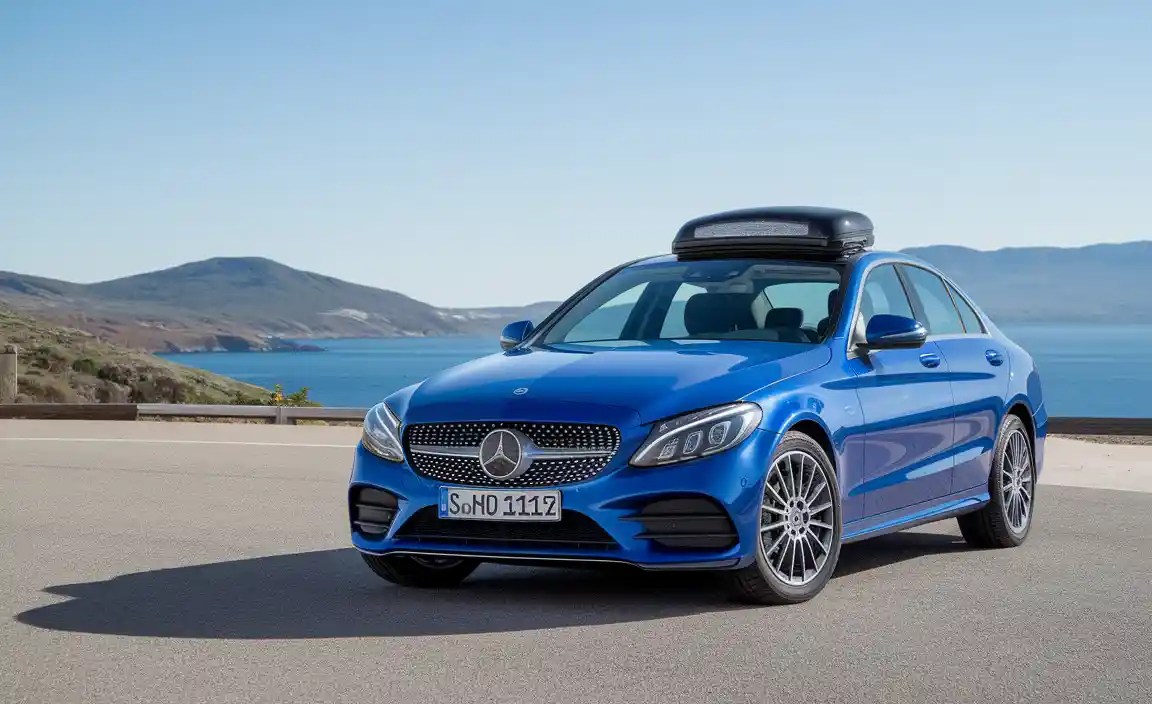
Step 1: Read Your Owner’s Manual Thoroughly
This sounds basic, but the owner’s manual is your ultimate guide to your specific C-Class’s features. It details how each system operates, its limitations, and how to activate or deactivate certain functions. Pay special attention to the sections on driver assistance systems.
Step 2: Engage and Understand Each System
Start by familiarizing yourself with one system at a time. On a safe, clear stretch of road (like an empty parking lot or a quiet street), experiment with features like Active Brake Assist (observing its warnings) or Adaptive Cruise Control. Understand what the visual and auditory alerts mean.
Step 3: Learn the Activation and Deactivation Procedures
Most driver assistance systems can be turned on or off via the steering wheel controls or the central infotainment display. Know how to quickly access these settings. For instance, you might want to deactivate Lane Keeping Assist on certain unlined rural roads, or if you’re experiencing strong crosswinds.
Step 4: Be Aware of System Limitations
Crucially, remember that these systems are aids, not substitutes for attentive driving. They have limitations:
- Sensors can be affected by weather: Heavy rain, snow, fog, or even mud/ice on sensors can impair their function.
- Surface markings are key: Lane Keeping Assist relies on clear lane markings. Poorly marked roads or construction zones can reduce its effectiveness.
- Detection ranges vary: Some systems may not detect very small objects, very fast-moving vehicles, or vehicles in unusual positions.
- Not autonomous: These systems are designed to assist, not to drive the car for you. You must remain attentive and ready to intervene.
Step 5: Practice in Varied Conditions
Once you’re comfortable, start using the systems in everyday driving. Utilize DISTRONIC PLUS® on the highway, and pay attention to the warnings from Blind Spot Assist. The more you use them in different scenarios, the more intuitive they become, and the better you’ll understand their benefits and limitations.
Comparing C-Class Safety Features Across Generations
Mercedes-Benz continuously refines its safety technology, meaning that newer C-Class generations often boast more advanced or nuanced crash avoidance features than older ones. Understanding these differences can be crucial for potential buyers or owners upgrading their vehicles.
Pre-2015 (W204 Generation and Earlier)
These C-Class models focused on foundational safety. Features like ABS, Electronic Stability Program (ESP), and multiple airbags were standard. Some advanced options like adaptive cruise control or collision prevention systems might have been available on higher trims or as optional packages, but they were less integrated and sophisticated.
2015-2021 (W205 Generation)
This generation saw a significant leap in driver assistance. Many systems that are now considered standard were introduced or made more widely available as standard or optional features. This includes:
- More advanced Active Brake Assist
- ATTENTION ASSIST® as standard
- Blind Spot Assist and Lane Keeping Assist became more common
- DISTRONIC PLUS with Steering Assist offered semi-autonomous driving capabilities
These features were often part of optional “packages” like the Driver Assistance Package.
2022+ (W206 Generation)
The latest C-Class models represent the pinnacle of Mercedes-Benz’s current safety engineering. The systems are more intelligent, more integrated, and offer enhanced functionality:
- Improved sensor technology: Better cameras and radar enable more precise detection.
- More proactive assistance: Systems can now intervene earlier and more effectively.
- Enhanced Active Steering Assist: Works across a wider range of speeds and scenarios.
- Upgraded Active Lane Change Assist: Allows for smoother lane changes when activating the turn signal.
- PRE-SAFE® Impulse Side: In certain side-collision situations, it can subtly move occupants away from the impact zone before the crash.
The latest C-Class models often come with a more comprehensive suite of these technologies as standard equipment, reflecting Mercedes-Benz’s ongoing commitment to democratizing advanced safety.
Key Differences in Safety Systems: A Snapshot
| Feature | W204/Earlier (Approx.) | W205 (Approx.) | W206 (Latest) |
|---|---|---|---|
| Active Brake Assist | Basic Collision Prevention Assist | Advanced with pedestrian detection | Enhanced, proactive interventions |
| ATTENTION ASSIST® | Optional/Not widely available | Standard | Standard, enhanced algorithms |
| Blind Spot Assist | Optional | Common optional feature | Standard or widely available optional |
| Lane Keeping Assist | Optional, basic intervention | More advanced intervention | Enhanced accuracy and steering input |
| Adaptive Cruise Control (DISTRONIC) | Optional, basic functions | DISTRONIC PLUS with Steering Assist | Enhanced, more sophisticated control |
Beyond the Car: Maintaining Optimal C-Class Safety
Your C-Class’s safety systems are remarkable, but their effectiveness relies on proper maintenance. Just like your brakes or tires need care, so do the components that enable crash avoidance.
Keep Sensors Clean
The sensors for systems like Active Brake Assist and Adaptive Cruise Control are often located behind the grille, in the bumpers, or behind the windshield (cameras). Dirt, mud, ice, or snow can obstruct their view, rendering them less effective or inoperable. Regularly wash your car and pay attention to these areas. If a sensor is blocked, your car will usually notify you with a dashboard warning.
Windshield Integrity
If your C-Class uses a windshield-mounted camera for systems like Lane Keeping Assist or rain-sensing wipers, a cracked or chipped windshield can compromise these functions. Have any damage repaired or the windshield replaced promptly by a qualified professional who can recalibrate the camera if necessary. Mercedes-Benz Genuine Parts are always recommended for optimal fit and function.
Tire Condition and Pressure
Properly inflated tires with good tread are fundamental to vehicle control and the effectiveness of stability and traction control systems. Ensure your tire pressure is set according to the manufacturer’s recommendations, typically found on a sticker in the driver’s doorjamb. Worn tires reduce grip, especially in wet conditions, directly impacting braking and handling.
Regular Servicing
Adhere to your C-Class’s scheduled maintenance as outlined by Mercedes-Benz. This ensures that all mechanical and electronic systems are functioning optimally, including those related to braking and stability. A thorough inspection during service can catch potential issues before they incapacitate safety features.
Software Updates
Like any advanced computer system, the software that runs your C-Class’s safety features may receive updates from Mercedes-Benz. These updates can improve performance, fix bugs, or enhance functionality. Ensure your car receives any relevant software updates during scheduled maintenance.
Emergency Maneuvers and Driver Response
Even with advanced C-Class crash avoidance systems and diligent defensive driving, there are rare moments when an immediate evasive maneuver is necessary. Knowing how to react can make all the difference.
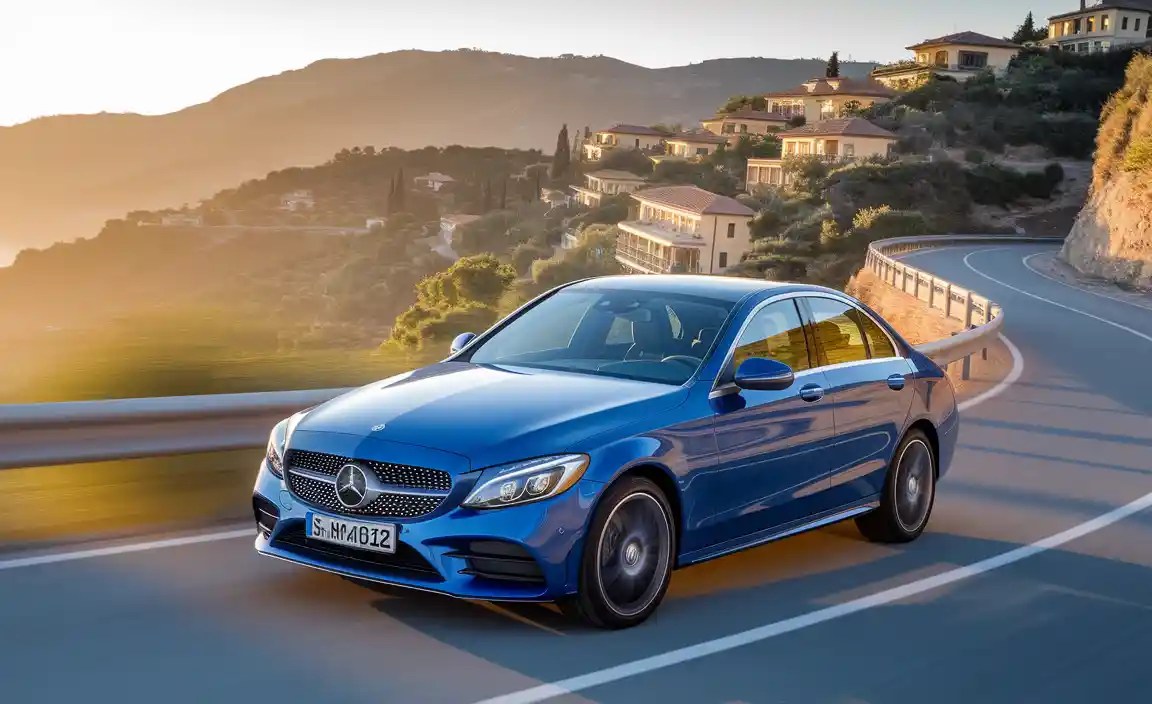
Sudden Braking
If you need to brake hard, apply firm, steady pressure to the brake pedal. Modern ABS systems will prevent wheel lock-up, allowing you to maintain steering control. Don’t “pump” the brakes, as this can interfere with the ABS. If your car has Brake Assist Plus, simply stepping hard on the pedal activates maximum braking power. If Active Brake Assist engages, the car will brake itself, but you should still steer if safe to do so.
Evasive Steering
If braking alone isn’t enough, and you have a clear path to steer into, do so decisively. Look where you want to go, not at the hazard. Modern Electronic Stability Programs (ESPs) are designed to help you regain control during sudden swerving. Remember to counter-steer if necessary and apply smooth throttle and brake inputs to stabilize the vehicle.
Understanding Vehicle Dynamics
A Mercedes-Benz C-Class is engineered for excellent handling, but physics always applies. Understanding how your car responds to steering, acceleration, and braking inputs is crucial. Practice emergency maneuvers in a safe, controlled environment (like a driving school) to build confidence and muscle memory. Resources like the National Highway Traffic Safety Administration (NHTSA) often provide excellent tips on safe driving and vehicle control.
Conclusion: Mastering Your C-Class Safety
Owning a Mercedes-Benz C-Class means you’re already in possession of a vehicle engineered with exceptional safety in mind. By understanding and utilizing its advanced crash avoidance technologies, such as Active Brake Assist, ATTENTION ASSIST®, and Lane Keeping Assist, you significantly enhance your protective bubble. However, technology is only one part of the equation.
Cultivating proactive defensive driving habits—maintaining safe distances, scanning your surroundings, and eliminating distractions—is your most potent tool. Regularly maintaining your vehicle’s safety components, from clean sensors to proper tire pressure, ensures these systems perform at their peak. Embrace this knowledge, practice safely, and drive with the confidence that comes from mastering both your C-Class’s capabilities and your own role as a vigilant, informed driver.
FAQ: C Class Crash Avoidance Insights
Q1: What is the most important safety feature in my C-Class for crash avoidance?
A1: While all systems work together, your constant attention and defensive driving habits are paramount. After that, Active Brake Assist is a critical system that can intervene automatically to prevent or mitigate collisions.
Q2: Can I rely solely on the driver assistance systems in my C-Class?
A2: Absolutely not. These systems are designed to assist, not to replace the driver. You must always remain attentive, keep your hands on the wheel, and be ready to take control at any moment. They have limitations and can be affected by external factors.
Q3: How do I know if my C-Class’s safety systems are working correctly?
A3: Your C-Class will typically display warning lights or messages on the dashboard if a system is malfunctioning or unavailable. Most systems will also show an icon when they are active and monitoring. Consult your owner’s manual for specific indicator meanings.
Q4: What happens if the sensors for Active Brake Assist are blocked?
A4: If the sensors (cameras or radar) are blocked by dirt, snow, ice, or heavy rain, the system will usually deactivate and display a warning message on your dashboard. Clean the sensors and windshield area, and the system should reactivate when clear.
Q5: Is it safe to use Adaptive Cruise Control (DISTRONIC) in heavy traffic?
A5: DISTRONIC is very useful in moderate to heavy traffic. However, you must still be attentive. The system may not react as quickly to sudden stops or unpredictable lane changes by other drivers, so be prepared to brake manually.
Q6: My C-Class has Active Lane Keeping Assist. Does it steer the car for me?
A6: Yes, Active Lane Keeping Assist can gently steer the car back into its lane if it detects you are drifting unintentionally. It also provides corrective braking pulses. However, it relies on clear lane markings and you should always supervise its operation and be ready to steer yourself.




